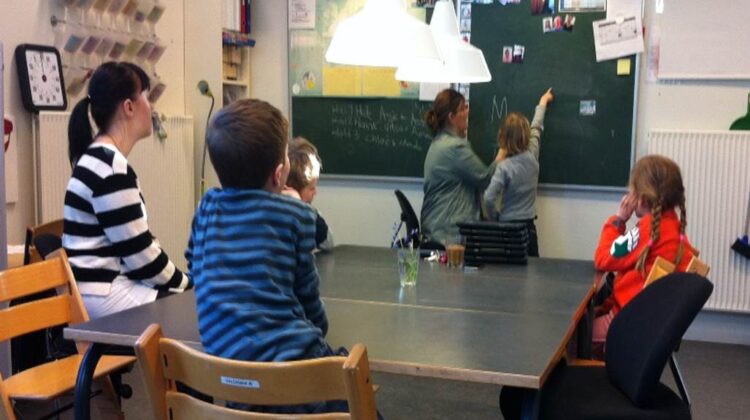
Intervention study about behaviour and acoustics
In January 2015 Ecophon and LOOP.bz started an intervention study at Søgårdsskolen in Gentofte municipality in Denmark. This school is a public school for kids with social cognitive challenges and learning disabilities (ADHD, autism, brain damage, Downs and others). With this group of children it is not possible to performance test before and after an acoustical treatment – so we decided to use observations together with measurements.
LOOP.bz is a company specialised in school and community development and Mie Guldbaek Broens from LOOP.bz used her skills as a teacher and pedagogic anthropologist to plan the observations in the classes. She was going to analyse the kids’ behaviour and the teachers’ use of the room before and after an acoustical treatment. We made observations in three classrooms where one was only a control room where nothing was changed during the study (we chose to observe in a control room to secure that any organisational change, changed weather conditions, changes in management or any other change that would result in change in behavior of the kids or personnel would be noticed).
The school already met the Danish building regulation and the acoustics – on paper – were good: Reverberation time was 0.4 sec. in all frequency bands. Despite this, the teachers complained about noise and sick leave was generally high. Therefore we decided to do two kinds of acoustical change: one should be optimum and one should be minimum. In classroom IC we added wall absorbers (minimum) and in classroom IB we mounted a new acoustical ceiling and added wall absorbers (optimum).
We visited the school several times to do observations and we tried to be just ‘part of the furniture’ during the lessons. We didn’t interact in class and we just sat still on a chair in the back of the rooms. We came many times to secure that the kids didn’t react to our presence. During the observations, measurements were done to analyse voice peaks, background noise, peaks in general etc.
What did we learn about the end users?
First of all, we learned that working with kids with special needs is a special way of teaching. We learned that the teacher could not teach the whole class standing at the blackboard giving instructions – and it is impossible just to give short instructions and then expect the children to work on their own for 15 minutes. We learned that it was very important that the teacher was physically close to the kids at all times and that he or she was always consistent in the way he or she addressed the kids, worked through the lessons and scheduled the day. We also learned that no matter what challenges the kids have, they can progress! The teachers were really dedicated people who tried their best and quickly adapted to situations not yet planned.
Sound and activity-based design?
In a school where teaching is so different from what we normally evaluate and analyse – the ‘good acoustics on paper’ was challenged. The observations before the acoustical treatment showed really high voice loads on teachers and the Lombard Effect became out of control when kids were angry, annoyed or disturbed.
The background noise in general was ok – but any small disturbance in the overall plan made sound levels go up.
We also experienced – in room IB (optimum) that the new white ceiling did a great difference in regards to light: The room used to be really dark and you couldn’t always see the facial expressions clearly, but after the treatment, the room was more ‘clear’.
The data and observations are not fully analysed yet but the indications show that low reverberation time will not secure a good sound environment if the activity and the people demand an acoustic design that control peaks and Lombard. And it seems as if the key is to work in more dimensions that one: we see benefits by adding absorption on the walls.
Minimum or optimum?
The acoustical measurements (RT, C50, STI, Gain) show really small differences in the two rooms – but small differences seem to affect the kids’ behaviour in reality.
There is no doubt that the minimum treated room is better than the original – but we also see that the next step – the optimum, makes sense. The difference between before and after, and between optimum and minimum, is measurable – but it’s only when we look at the observations that we see a clear trend.
The just noticeable difference (JND) for the acoustical parameters is maybe correct for normal hearing adults – but the case with these sensitive end users could be another story since very small differences paint another picture.
For more information about this ongoing study contact Mie regarding the pedagogic issues or Mai-Britt regarding the acoustics.

